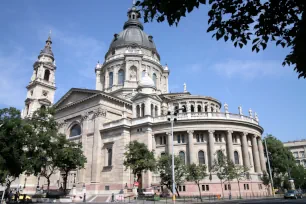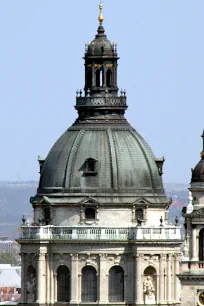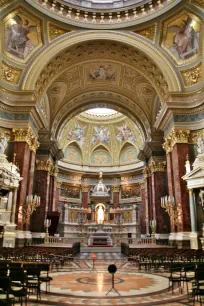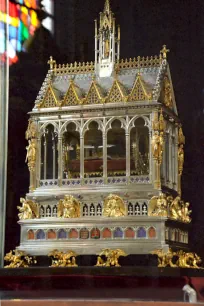Fifty years in the making, the Basilica of St Stephen is Budapest’s largest church. It is dedicated to St. Stephen, the first Christian king of Hungary. His right hand, the country’s most important relic, is enshrined in one of the church’s chapels.
Building St Stephen’s Church


Construction of the basilica began in 1851. The first architect to work on the design was Jozsef Hild, whose ideas for the structure reflected the Classical style. In 1867, when Hild passed away during the construction of St. Stephen’s, architect Miklós Ybl took over, adding his own touch to the basilica, which leaned more towards Neo-Renaissance.
A dome collapse in 1868 – a result of the use of inferior material and a construction fault in the drum – slowed the construction process significantly, as did the death of the second architect, Miklós Ybl, in 1891. The layout of the interior of the basilica and the completion of the building was ultimately overseen by yet a third architect, Jozsef Krausz. The church was finally consecrated in 1905 and on December 8 of the following year, Emperor Franz Joseph laid the final stone.



Even though the church wasn’t initially designated a basilica, locals immediately started to refer to the church as ‘the basilica’ due to the building’s sheer size. The name can now be officially used since Pope Pius XI bestowed the church with the title of ‘basilica minor’ in 1931. And in 1993 the church was given the title of cathedral when the archdiocese of Esztergom became the archdiocese of Esztergom-Budapest.
The Basilica
The Basilica of St. Stephen has a Greek-cross floor plan. Its center is crowned with a majestic dome, which reaches a height of 96 meters, exactly the height of the Parliament Building. The height refers to 896, the year of the settlement of the Magyar tribes in the Carpathian Basin, which led to the foundation of today’s Hungary.
You can travel by elevator or walk up 302 steps to the terrace around the dome, from where you can enjoy a panoramic view of Budapest.
The relief figures that decorate the tympanum were created by Léo Fessler. The same sculptor was responsible for the statues that crown the colonnade of the church’s apse. He also created the large statues of the four apostles that rest in the niches of the drum supporting the central dome. The massive wooden door below the tympanum is decorated with medallions showing the busts of the twelve apostles. In the right tower, you find the largest church bell in the country, weighing 9144 kg.
The Interior

Architect Jozsef Krausz called upon many of Hungary’s most well-known sculptors and painters to contribute to the decoration of the inside of St. Stephen’s. The incredibly ornate interior features about fifty different types of marble, elaborately decorated chapels, and many sculptures, including a bust of the basilica’s patron saint, who was the first Christian king of Hungary. Special papal permission had to be granted in order to place the statue on the altar.
The Hand of St. Stephen
A purpose-built chapel, the Chapel of the Holy Right, holds Hungary’s most important relic, the preserved right hand of St. Stephen. The mummified hand is kept in a shrine and paraded around the streets each year on August 20, the anniversary of St. Stephen’s death.
- Next: Gellért Hill
- More Sights & Attractions in Budapest

